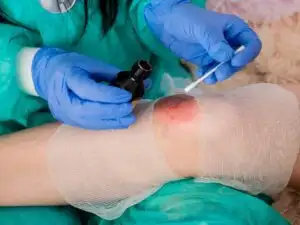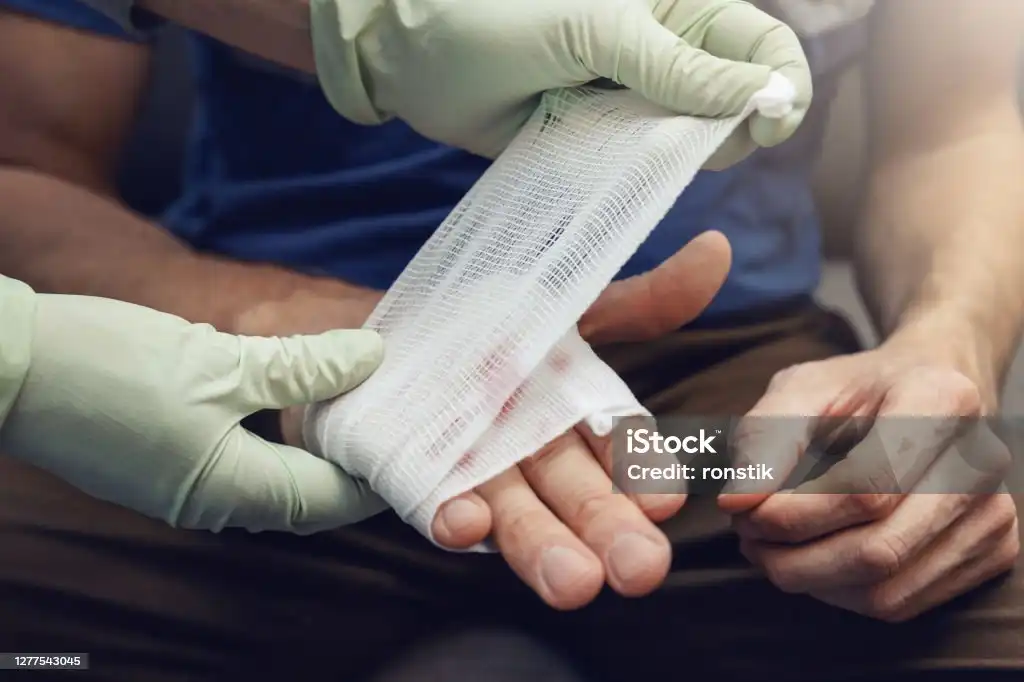Wound debridement removes dead tissue to promote healing and prevent infection. This essential procedure is used for chronic wounds, diabetic ulcers, and severe injuries. A wound care specialist Atlanta GA assesses the wound and recommends the best debridement method, such as enzymatic, surgical, or autolytic techniques. Proper wound management accelerates recovery and reduces complications. Patients in need of expert care can visit wound management specialists for advanced treatment options, including hyperbaric oxygen therapy, to enhance healing and tissue regeneration.
Debridement is an important part of wound healing. It involves removing dead or damaged tissue and stimulating the wound bed to allow healthy tissue to grow.
This process helps reduce the risk of infection and supports accelerated time to recovery. TenMed Wound Care Specialists are physicians who are experienced and trained to assess wounds and choose the safest and most effective method to debride wounds.
Whether the wound is caused by an accident, surgery, or a chronic condition, debridement plays a vital role in cleaning and preparing the wound to promote rapid healing.
Understanding this procedure can ease concerns and help patients feel more prepared for their care. This post will explore the purpose, methods, and expectations of wound debridement.
Why Is Wound Debridement Important for Healing?
Chronic wounds, such as diabetic and pressure ulcers, can struggle to heal if they’re contaminated with dead tissue, bacteria, or other unhealthy material. This is where debridement comes in—it clears out damaged or infected tissue, optimizing the wound bed to promote the growth of healthy tissue.
Several benefits of wound debridement include:
- Reduced Infection Risks: Removing necrotic (dead) tissue minimizes the breeding ground for harmful bacteria.
- Disrupting Biofilm: Wounds harbor bacteria that create a gel film to protect them from your immune system and the environment. Disruption of this film will reduce the ability of bacteria to thrive on an open wound.
- Accelerated Healing: Stimulation of healthy tissue promotes regeneration and helps wounds close faster.
- Improved Wound Assessment: Clearing away debris allows our physicians to examine the wound better and create tailored care plans.
Methods of Wound Debridement
There’s no one-size-fits-all approach to debriding a wound. Our physicians use different techniques based on their assessment of the wound and a patient’s overall condition. Here’s an overview of the most common methods, along with their advantages and drawbacks:
1. Sharp Debridement
Performed using curettes, scalpels, scissors, or other surgical tools, sharp debridement is the most common method, and in skilled hands is the most effective. With topical anesthetics, this procedure is usually well tolerated by patients.
2. Ultrasonic Debridement
This method involves specialized equipment that uses specific frequencies of soundwaves to penetrate deeper tissue. While less tissue is cleared from the wound environment, this procedure is effective and painless making it a good option for those who cannot tolerate sharp debridement.
3. Enzymatic Debridement
This method uses topical dressings with enzymes which breakdown non living tissue while leaving healthy tissue intact. These dressings work over time and can be part of the treatment protocol until a healthier wound environment is achieved.
4. Autolytic Debridement
This method involves applying specialized dressings to allow the body’s natural enzymes and moisture to break down unhealthy and non living tissue. This is typically painless and well tolerated.
What to Expect During Wound Debridement
Wound debridement is a common procedure used to remove dead or damaged tissue, allowing healthy tissue to heal more effectively. When you visit a wound care specialist in Atlanta, GA, the method of debridement—surgical, enzymatic, or autolytic—will be carefully selected based on your specific wound. The process is usually performed in a clinical setting and may involve mild discomfort, but it’s a critical step in preventing infection and speeding up recovery. Many patients choose TenMed, LLC when searching for a wound care center near them that offers expert care and advanced treatment options.
Understanding the process can alleviate some of the anxiety of undergoing wound debridement. Here’s a breakdown of what typically happens:
Before the Procedure
- Assessment: Your physician will examine your wound and determine the most appropriate debridement method. Pictures and measurements are taken to document the predebridement status of the wound which will help to track the healing progress over time.
- Preparation: The wound is cleansed with a gentle wound cleanser and topical anesthetics may be applied if needed for patient comfort.
During the Procedure
- The physician will remove unhealthy tissue and foreign debris / contaminants using specialized tools and instruments.
- The wound is prepared for optimal response to the treatment and dressing plans tailored for the patient’s wound and condition.
After the Procedure
- Follow-Up Care: Patients receive specific instructions for dressing changes, cleansing, and protecting the wound.
- Healing: You may notice redness or mild discomfort initially, which typically subsides as healing progresses.
- Monitoring progress: Weekly appointments with your physician will ensure the wound continues to heal as expected.
Potential Risks and Complications
While wound debridement is generally safe when performed by our trained professionals, being aware of potential complications ensures you’re better prepared.
- Pain or Discomfort: Temporary pain during and after debridement is common but manageable.
- Bleeding: Minor bleeding during tissue removal is typical, though excessive bleeding is rare in non-surgical methods.
- Infection: All open wounds have the potential to develop infection, and this will be closely monitored by the TenMed team.
Alert your physician immediately if you experience any unusual symptoms, such as increased swelling, new rash or skin irritation, significant change in drainage including a strong odor, or fevers.
Why You Need a Wound Care Specialist
Many patients wonder if wound debridement can be handled at home. The short answer? No. Wound debridement is a sophisticated process best left to trained medical professionals.
Here’s why seeking help from a TenMed Wound Care Specialists is beneficial:
- Expertise: Our physicians are specialized and are trained in procedures and treatment protocols to minimize risk for complications and to accelerate healing.
- Comprehensive Care: The TenMed clinical team will provide step-by-step guidance to help you recover faster. Our physicians and compassionate clinical staff are focused on your overall well-being as it relates to your healing.
Seeking the Best Outcome for Your Chronic Wounds
Wound debridement is not just a medical term—it’s a critical step in healing chronic wounds. The physicians at TenMed will select the best debridement technique that can pave the way for faster healing and recovery.
If you or a loved one has a new or chronic wound, don’t wait to seek help. Reach out to our team to take the first step toward healing. Addressing these wounds promptly not only improves your physical health but also helps restore your quality of life.



